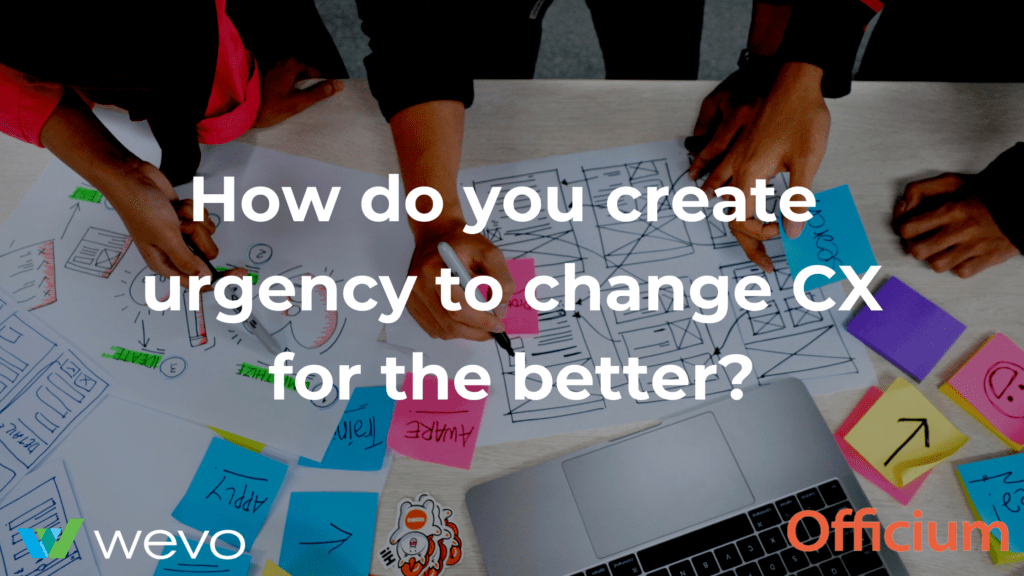For the latest episode of our Qualt Q&A video series, Jenni spoke with Nate Brown, Chief Experience Officer at Officium Labs and Co-Founder of CX Accelerator, about the state of customer experience. In the discussion, Nate admits that proving CX’s value has been a challenge but that CX expertise has never been more important as customer expectations shift constantly.
Watch their full conversation and read on for key insights from Jenni and Nate.
What exactly is CX?
The term customer experience is often used in different contexts — but at its core, CX is the “thoughts, perceptions and feelings that customers have toward a brand. The challenge is to enhance those perceptions so that customer behavior and loyalty continues to be favorable to your brand.” -Nate
CX is top-of-mind today for many businesses that are competing for the loyalty of customers who are conducting more interactions online than ever before. And if it’s not a priority — it should be.
“A few select brands knocked CX out of the park during the pandemic, which made customers raise their expectations. Now all brands are held to a higher standard.” -Nate
Proving the value of CX
Despite these new, higher customer expectations CX professionals are still grappling with the perception that CX is not specific enough and does not generate meaningful results.
“There’s been trouble mobilizing people internally to see the ROI of CX. To change this perception, CX leaders need to establish a sense of urgency from the beginning and keep that fire lit over time.” -Nate
How to properly measure CX has been an issue
When looking for CX insights, the common challenge is how to collect disparate data in a holistic way that measures the true customer journey.
“There are too many pockets of CX data. You have marketing survey data, customer service transactional data, and the product team’s data. This data often doesn’t come together to paint a picture of the actual customer journey. You don’t get real insights into why customers behave the way they behave.” -Nate
CX leaders who can prove the value of CX must show, via data, the cause and effect of customer behavior and then use that data to improve customers’ experiences and grow revenue for the organization.
“We make far too many assumptions about customer behavior. So it’s important for companies to let real customer insights and data determine the company’s direction more.” -Nate
Being focused on CX insights will benefit the entire organization
These days a brand’s identity is not driven by marketing copy as much as it is by what one customer says to another.
“It’s the perceptions you’ve helped generate in customers that dictates who you are as a brand. Consumers only believe marketing copy a little; what they really believe is what they’ve heard through friends, family or someone in their network. This makes CX work such an important competitive differentiator.” -Nate
Within organizations, Nates hopes CX teams can move from the periphery to a more centralized role that unlocks the capabilities of CX across the whole company.
“The main job of a CX team isn’t necessarily to ‘do CX’ but to develop a CX change coalition made up of key stakeholders from the groups that affect the customer journey [marketing, sales, customer support, finance]. The CX team needs to establish that sense of urgency and set the context so everybody in the company can do CX every day.” -Nate
Changing the perception of CX for the better
Nate says too many organizations gave up on CX before it had time to show meaningful results, but believes CX teams can still change the perception.
“It won’t happen overnight. CX needs to take root and show ROI before you can earn allies in other departments. CX is not a trend. It IS the way you behave as an organization toward your customers to enhance their perception of you. It’s the greatest thing you can do as a company, but it takes time to build into your culture.” -Nate
Creating urgency for CX change
Without a strong sense of urgency, Nate says, CX becomes just another “initiative” and most initiatives fail.
More than just a finite “initiative,” CX needs to be considered as an ongoing cycle. First, you collect data on how customers felt about your brand at a certain point; then you identify points of friction and make changes that enhance customers’ experiences; then you measure how those enhancements improve the financial health of the organization.
“This cycle requires skill and patience. But it is a tangible process that measures CX holistically and makes it something longer-lasting and part of the organization’s culture.” -Nate
CX professionals can significantly reduce effort and increase the speed of the CX cycle by taking advantage of human-augmented AI user research solutions to do the heavy lifting of collecting and analyzing customer feedback data.
“Jumping in and making CX changes is dangerous until you have that voice of customer engine in place, supplemented by a tool like WEVO that gives you great insights into the digital experience aspect.” -Nate
Real life rapid CX change for the better
Nate points to a Fortune 10 company in the gaming space (and Officium client) where an executive put her foot down and declared she wanted to be best in class in customer service.
“With the help of Officium, the company went from a 30% CSAT to 85% CSAT in one year. She established that sense of urgency! Then we helped bring in change management resources to make those CX enhancements happen. They saw a huge increase in player retention and share of wallet and were able to protect $3 million in revenue.” -Nate
Learn how to leverage WEVO to create CX urgency in your organization. Talk to us!




